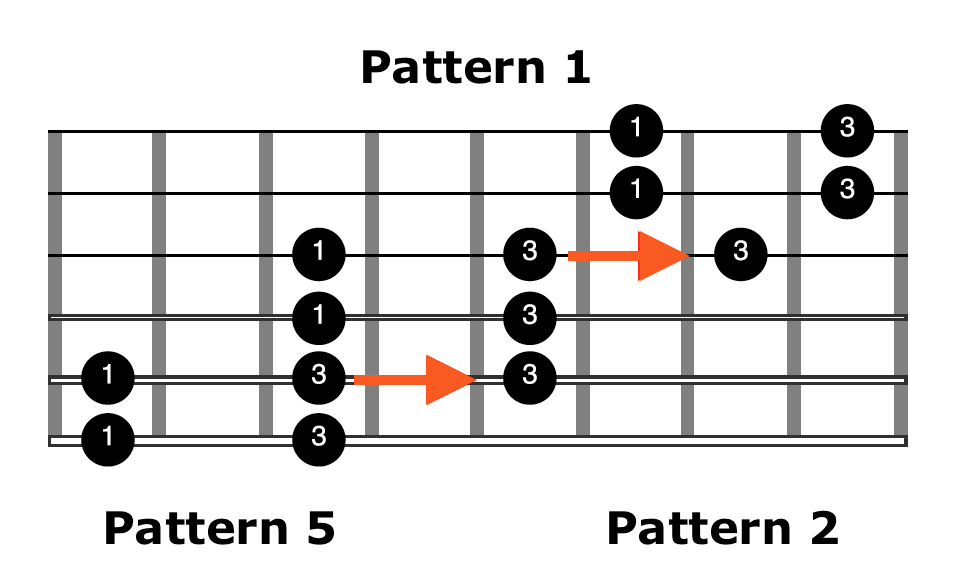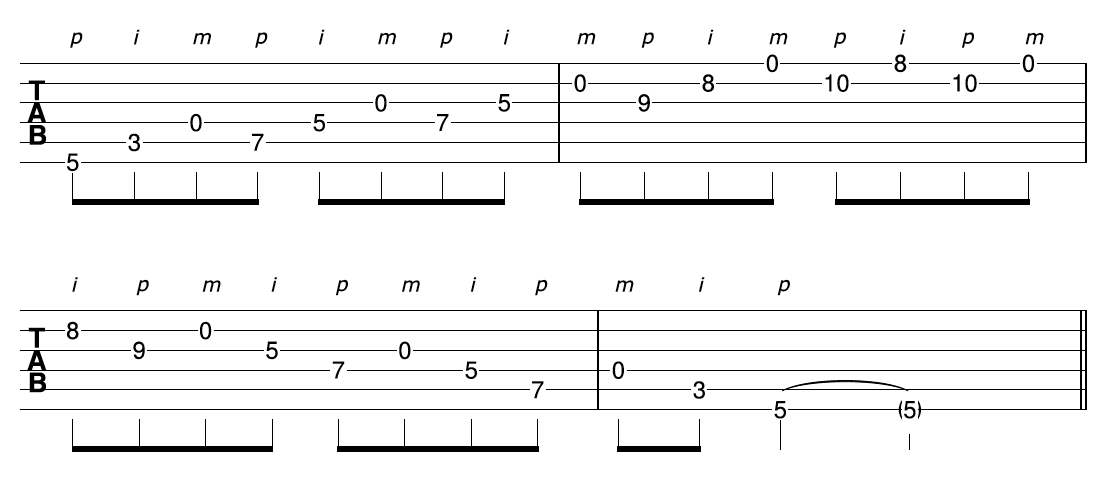How To Create Unique Fingerpicking Blues Riffs On Guitar
By Simon Candy
 In this article, we will explore a unique approach to soloing in the context of blues music. The approach involves using a commonly used pattern on the guitar known as the horizontal pentatonic scale shape. This pattern is so named because it moves across the fretboard in a horizontal direction.
In this article, we will explore a unique approach to soloing in the context of blues music. The approach involves using a commonly used pattern on the guitar known as the horizontal pentatonic scale shape. This pattern is so named because it moves across the fretboard in a horizontal direction.
In addition, I will guide you through some actual blues riffs based on this pattern that you will be able to adapt to use in your own playing.
Keys that have a lot of open string notes in them are best suited for this way of playing, as we are specifically targeting open strings throughout this soloing approach. With that said, the key I’ll be using for these fingerpicking riffs is the key of Am:
A B C D E F G A
As you can see, the key of Am also has all the open string notes within it.
The video below will help reinforce and further train the concepts taught in this article, so bookmark it to check out after working through this lesson.
The Horizontal Pentatonic Scale pattern
Here is the pattern we will be using in today’s lesson:

It is referred to by various names but is simply a combination of pentatonic scale patterns 5, 1, and 2.
I like to call it the horizontal pentatonic scale due to the nature of it moving horizontally across the fretboard.
We will be using this pattern in the key of Am, therefore we need to start it from the 3rd fret:

The Pattern
What we will do with this pattern now, is apply the open string acoustic guitar solo technique that I have outlined in a previous article lesson (check that out for more detail)
Starting from the 5th fret on the bottom string, we get the following sequence of notes from which to apply a forward banjo roll:

Next you need to shift position so your 3rd finger is aligned with the 7th fret of the 5th string to then play the next sequence:

Staying in this position, repeat the sequence, only this time from the 7th fret of the 4th string:

To finish ascending the scale, you need to make one more shift of position so your 2nd finger is now over the 9th fret of the 3rd string. From here, play one more forward banjo roll sequence like so:

You need to play this little sequence on the top 2 strings to allow for a smooth change over from ascending to descending the pattern:

From here you simply descend the pattern using a backward banjo roll.
• String set 1, 2, 3:

• String set 2, 3, 4:

• String set 3, 4, 5:

• String set 4, 5, 6:

Here now is our open string blues pentatonic scale pattern ascending and descending:

Notice the unique sound the open strings bring to this otherwise typical pattern for soloing on your guitar. Now it’s time to create some blues riffs utilising the open strings from this pattern.
Blues Fingerpicking Riffs
The following are 3 examples of blues riffs I have created from the open string scale pattern above.
Learn each riff, and then take the riff and apply it over a backing track.
• Fingerpicking Blues Riff 1:

This first riff targets the upper part of the scale pattern, and finishes within pattern 1 (the middle part of the scale). Notice the subtle hint of connecting this way of soloing on your guitar, with regular soloing with the 1/4 bend at the 5th fret, 3rd string.
• Fingerpicking Blues Riff 2:

This second riff also targets the upper and middle parts of our scale pattern. Notice the use of the blues note at the 8th fret on the 3rd string.
• Fingerpicking Blues Riff 3:

This final riff targets the lower part of the scale with a sequence, that in part repeats as it moves into the middle area of the shape (pattern 1 territory).
Watch the video below to learn how to take this open string soloing concept and apply it to melodies to create an incredibly beautiful arrangement of a song: